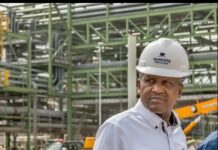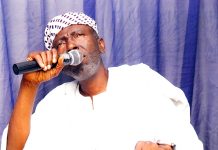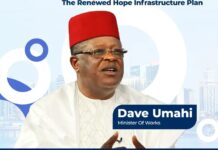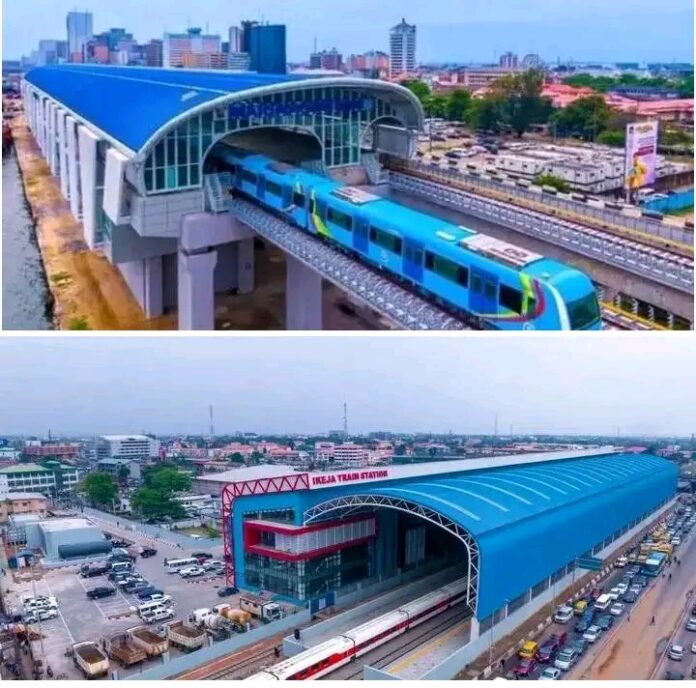Achieving the Lagos of Our Dream
Lagos is no longer the nation’s political capital, but it is undoubtedly its business and financial engine-room. Indeed, it is West Africa’s commercial nerve centre. Lagos contributes 30 per cent of Nigeria’s GDP and holds no less than 80 per cent of the country’s industrial capacity. This is quite remarkable, considering the fact that Lagos is home to 10 per cent of Nigeria’s 200 million+ population on a landmass representing less than one per cent of our great nation.
As far back as the 1980s, with rising unemployment statistics, we had understood the need to maximize the opportunities inherent in a city-state such as ours by diversifying the abundant economic potential and harnessing human capital for better growth. The road to actualizing this was a dedicated will to develop alternate industries in agriculture, technology, hospitality and entertainment, among others, as well as in the informal sector. Our founding vision of a megacity in which there are opportunities for all, regardless of race and colour, remains strong.
Today, a population of over 21 million residents is evidence of the unprecedented rate at which Africa’s largest city is growing. Our urban footprints in the last 60 years provide a window into the urbanization of Lagos, illustrating a story of the social, economic, environmental and political factors that have reciprocally shaped our city. Research suggests that these changes may be nothing compared to what we will witness in the next 60 years. Maintaining the current growth and migration rates, Lagos could become the world’s largest metropolis, home to 85 or 100 million people.
How are we poised to further steer Nigeria through the next decades of her independence? We must look to the foundational pillars which define good governance in any democracy. Our administration condensed this to six cardinal indices of development particular to Lagos State, yet adaptable to any city of the world, namely: Traffic Management and Transportation; Health and Environment; Education and Technology; Making Lagos a 21st Century Economy; Entertainment and Tourism; Security and Governance. These are encapsulated in the acronym T.H.E.M.E.S. Agenda for a Greater Lagos.
What do you see when you close your eyes and imagine the Nigeria of the future, say 5, 10, 20, 50, 60 or even 100 years from now? This is the question I ask myself daily in the discharge of my duties and in implementing policies which are designed to be adapted for a world beyond our present circumstances and realities. The litmus test for any course of action is to objectively answer whether a policy would be of benefit to our children and generations yet unborn.
The Lagos Light Rail system is one of such projects which will redefine our commuting experience and overhaul the entire transport system. Gleaning lessons from the railway operations of old and infusing ultra-modern technology, this will open up Lagos like never before, easing the movement of people and goods within the metropolis. We are in the final phase of delivering the 27km Blue Line, which connects Marina in the heart of the city with Okokomaiko on the outskirts. It is set for test-run in December 2021. This will pave the way for the Red Line from Agbado-Marina and six other planned routes, which are part of our transport masterplan. ALSO READ: Senate mulls N5m fine for illegal drone construction. The future of transportation is the ability to connect from opposite sides of the mainland to Lagos Island in minutes. This will not only positively impact the ease of doing business within Lagos, but promote enhanced interstate commerce with better opportunities for all.
We are making the most of our unique topography by investing aggressively in an operational water transport system. Commuters are being ferried across Lagos waterways along various routes, comprising Ikorodu, Ebute-Ero, Apapa, CMS, Ikoyi and Ajah, with LAGFERRY services. Launched 14 boats earlier this year and are set to double the fleet by the end of first quarter of 2021. We extended the campaign to safety of passengers by removing water hyacinth from the water channels and creating navigation routes through the use of directional balls. These are all geared towards easing the pressure on our roads.
We recently flagged off the 13.68km long BRT corridor from Oshodi-Abule Egba, which has drastically reduced travel time from an average two hours during peak periods to approximately 30 minutes. This is in addition to an upgraded e-ticketing system, which will be integrated into the BRT, LAGFERRY and Light Rail services. Acknowledging the need for partnership in meeting the demand for commuting services, we have engaged ride-hailing companies to develop regulatory guidelines which meet this demand and prioritize safety of passengers. These are all aimed at improving the public commuting experience and increasing productivity of an average Lagosian.
Our commitment to providing sustainable energy and affordable power is challenging the traditional stereotypes. A few months ago, the Lagos State Government launched an innovation challenge (Lagos Smart Meter Hackathon), which is leveraging the tech community to find crowd sourced solutions to our metering gap through locally developed prototypes for prepaid meters. Similar initiatives aimed at accelerating the pace of technological advancement are constantly incubated through dedicated programmes at the Eko Innovation Center.
In the same vein, we expanded the Olusosun landfill, one of Africa’s largest dumpsites, by 42 acres to accommodate increased activity and plans to harness energy from the natural gases which build up there. This is one example of the ways in which Lagos applies homegrown solutions to problems, in this case waste management.
To Lagosians, I cannot overstate the crucial roles we all have to play as individuals in the achievement of the Lagos of our dream. We rely on you, because you are our greatest resource –the demographic dividend which is only payable when our young, vibrant workforce exerts their full capacities to driving economic growth.
Excerpts from Governor Babajide Sanwo-Olu’s Nigeria @ 60 Independence Anniversary Speech
































